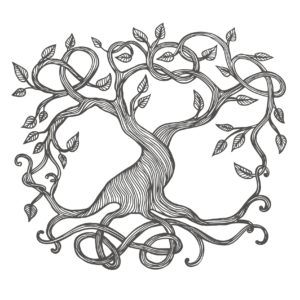
Some Modern Pagan practitioners, especially those who base their ceremonies on older Celtic religious traditions, have incorporated older holidays and festivals into their modern spiritual paths. This includes some adherents to reconstructionist pre-Christian European traditions, as well as present-day new movements such as Wicca. Practitioners of these faiths, particularly those in Europe and the Americas, celebrate four major festivals said to be observed by Celtic peoples prior to Catholicism’s arrival on the isles.
Festivals That Herald the Oncoming Seasons
Some modern pagan practitioners observe festivals in a “Celtic calendar,” with four major holidays that mark the beginnings of seasons: Samhain, Imbolc, Beltane and Lughnasadh. For followers of Wicca and a few other traditions, these four celebrations are included in a “Wheel of the Year” that also incorporates the solstices, equinoxes and other dates. The Pagan Library is just one of many sources detailing the yearly calendar of these observances, known as “sabbats” by some in present-day traditions. Samhain, Imbolc, Beltane and Lughnasadh are sometimes collectively called “quarter days” or “fire festivals.”
Samhain: Marking Winter’s Approach
Samhain was said to end the harvest season, allowing communities to prepare for the oncoming cold winter. BBC Religions describes the festival in more detail, revealing that it also was celebrated as a Feast of the Dead. Believed to be a time in which the veil separating the living realm and the Otherworld thinned, tradition held that Samhain was a period in which the dead could more easily join the world of the living. Depending on the celebrant, Samhain also marks the beginning of each new year. It is customarily celebrated from October 31 to November 1 each year, which also corresponds with Halloween and All Saints’ Day.
Imbolc: Inching Closer to Spring
Observed around February 1, Imbolc falls at the midway point between the winter solstice and the spring equinox. It also occurs at the same time as Candlemas on many Christian liturgical calendars, and is also known as St. Brigid’s Day. This is unsurprising, as modern Wiccans associate this day with the ancient Celtic goddess Brigid. Furthermore, some observe Imbolc as a “women’s holiday,” and Dianic Wiccans customarily conduct initiations at this time.
Beltane: A May Fire Festival
Customarily celebrated on May 1, Beltane marked the point between the spring equinox and the summer solstice. It was also seen as a time of optimism, as revelers looked forward to the waxing power of the sun, longer days, warmer weather and more daylight. Patheos blogger Jason Mankey revealed that bonfires were also lit for ritual purposes during Beltane, namely to purify and protect people, crops and livestock. Additionally, the maypole is typically associated with this holiday, serving as a symbol that winter was over and summer was on its way.
Lughnasadh: The Harvest Begins
Falling halfway between the summer solstice and the autumn equinox, Lughnasadh is usually observed on August 1. Also called August Eve or Lammas by some celebrants, it commemorates a sanctity and reverence of the harvest and is likely named for the Celtic deity Lugh, who is regarded as a sun or sky god and has been associated with crafting, the arts, the law and the harvest. While some Wiccans bake a figure of the god into bread and then eat the bread, celebrations of Lughnasadh vary widely among those who observe it.
Some modern pagans take a reconstructionist approach to their celebrations. On the other hand, Wiccans, Neo-Druid and some Neopagans fold them into a calendar with other holidays and see a broad narrative, such as the marriage of the God and Goddess or a battle between the Oak King and the Holly King, infusing the overall yearly cycle. While the traditions honored in the observance of these yearly festivals can differ according to the spiritual paths one follows, many pagans around the world celebrate them as part of their year.

